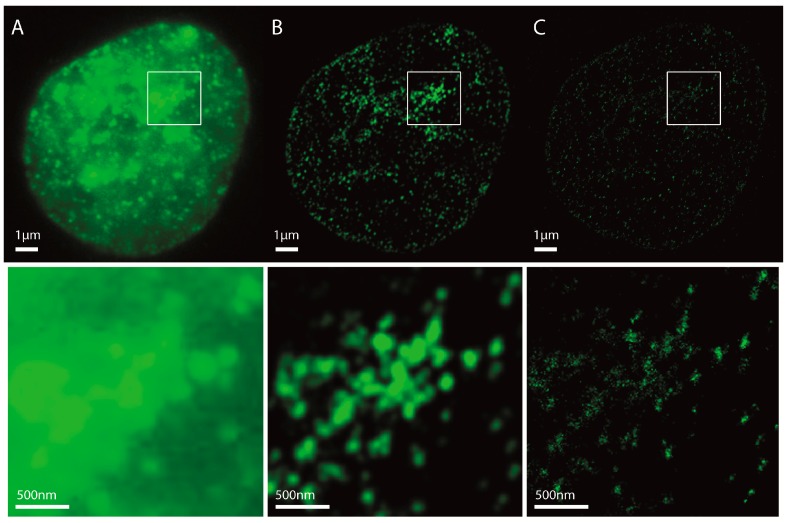Figure 1.
Localization microscopy images of H3K9me3 immunostaining in a SkBr3 cell nucleus. (A) Conventional widefield microscopy image; (B) Density image. The image is created from the coordinate matrix. For this purpose, the localization data stored in nanometres in the coordinate matrix must be converted into pixels. For this, a pixel size in nm must be determined. The coordinates from the matrix are then assigned to the corresponding pixels. Then, in a fixed radius R around each coordinate, it is determined how many further coordinates are within this radius. This value is assigned to the coordinate. In order to emphasize contiguous structures, each coordinate with an assigned value greater than zero is the starting point of a Gaussian distribution with a given σ. The sum of all Gaussian distributions then represents the intensity distribution of the Gaussian-filtered density image (example: Pixel size = 10 nm/pixel, radius R = 1000 nm, Gaussian filter σ = 50 nm); (C) Standard localization image. This image is also created from the localization data. Again, a pixel size must be determined. Here, every coordinate is the starting point of one Gaussian distribution with the localization precision as σ. (pixel size = 10 nm/pixel).

